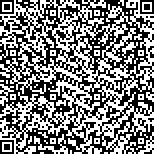卢璨,孙洁.卒中后吞咽障碍患者肺部感染相关危险因素分析[J].中华物理医学与康复杂志,2021,43(11):978-982
扫码阅读全文

|
| 卒中后吞咽障碍患者肺部感染相关危险因素分析 |
|
| |
| DOI:10.3760/cma.j.issn.0254-1424.2021.11.004 |
| 中文关键词: 卒中后吞咽障碍 吞咽造影 吸入性肺炎 |
| 英文关键词: Stroke Dysphagia Videofluoroscopy Swallowing Aspiration pneumonia |
| 基金项目:徐州市科学技术局重点研发计划(KC18190) |
|
| 摘要点击次数: 4804 |
| 全文下载次数: 5458 |
| 中文摘要: |
| 目的 应用吞咽造影检查(VFSS)分析卒中后吞咽障碍(PSD)患者吸入性肺炎(AP)的相关危险因素。 方法 纳入2017年9月至2019年9月期间在我科或神经内、外科完成VFSS检查且符合入选标准的105例PSD患者,按照是否发生AP将其分为肺炎组及非肺炎组,对其一般资料、鼻饲情况以及基于VFSS的Rosenbek渗漏-误吸量表(PAS)评级、咽通过时间(PTT)、咽部残留(PR)、主动咳嗽、饮食调整等指标进行回顾性分析。采用单因素及多因素Logistic回归模型进行肺炎危险因素的相关性分析,评估肺炎组及非肺炎组患者的一般情况、VFSS结果以及基于VFSS的饮食调整与肺部事件发生的相关性。 结果 共纳入105例患者,其中肺炎组29例,非肺炎组76例。肺炎组与非肺炎组患者在年龄、卒中部位、病程、合并2型糖尿病、鼻饲管饮食、主动咳嗽、PAS评级、咽通过时间、咽部残留、饮食调整等方面组间差异均具有统计学意义(P<0.05),在性别、洼田饮水试验结果、合并高血压或房颤、白细胞数量等方面组间差异均无统计学意义(P>0.05)。对影响患者肺炎发生的单因素进行Logistic回归分析,发现卒中部位、年龄≥65岁、2型糖尿病病史、鼻饲管饮食、主动咳嗽以及基于VFSS的饮食调整、PAS评级>6级、咽通过时间延长、咽部残留与肺炎发生具有明显相关性(P<0.05);对影响患者肺炎发生的多因素进行Logistic回归分析,发现脑干卒中、双侧半球卒中患者肺炎发生率显著高于单侧半球卒中患者;年龄≥65岁患者肺炎发生风险高于65岁以下患者;PAS评级>6级、咽部残留、咽通过时间延长患者发生肺炎的风险较高;而主动咳嗽是抑制肺炎发生的保护性因素。 结论 年龄≥65岁、双侧半球及脑干卒中、PAS评级>6级、咽通过时间延长、咽部残留是PSD患者发生AP的独立危险因素,主动咳嗽是抑制AP发生的保护性因素。 |
| 英文摘要: |
| Objective To analyze the risk factors for aspiration pneumonia among persons with post-stroke dysphagia. Methods A total of 105 dysphagic stroke survivors were examined using videofluoroscopy. Those suffering from aspiration pneumonia constituted a pneumonia group, and the others were a non-pneumonia group. Univariate and multivariate logistic regression were conducted using data on nasal feeding, pharyngeal transit time (PTT), pharyngeal remnants, active coughing, diet adjustment and Rosenbek Penetration-aspiration Scale (PAS) scores to analyze the risk factors for aspiration pneumonia. Results There were 29 in the pneumonia group and 76 in the non-pneumonia group. Significant age differences were observed between the two groups, and also significant differences in the location of the stroke, the course of the disease, the incidence of diabetes mellitus, nasal feeding, active coughing, PAS score, PTT, pharyngeal remnants and diet adjustment. But there were no significant differences in gender, Kubota drinking water grade, the incidence of hypertension or atrial fibrillation, or leukocyte count. Univariate analysis showed that stroke site, age≥65, type 2 diabetes, nasal feeding, active coughing, diet adjustment, a PAS score >6, prolonged PTT and pharyngeal residue were all significant predictors of pneumonia. Multivariate logistic analysis indicated that the incidence of pneumonia was significantly higher in patients with a brainstem or bilateral stroke than among those with unilateral stroke. Patients older than 64, with a PAS score >6, pharyngeal residue or prolonged PTT were at significantly greater risk of coming down with pneumonia, though active coughing was correlated with lower risk. Conclusions Age >64, bilateral or brainstem stroke, a PAS score >6, prolonged pharyngeal transit time and pharynx remnants are independent risk factors for aspiration pneumonia among dysphagic stroke survivors, while active cough is a protective factor. |
|
查看全文
查看/发表评论 下载PDF阅读器 |
| 关闭 |
|
|
|